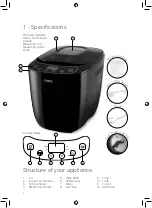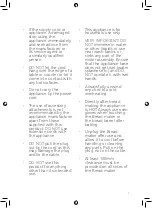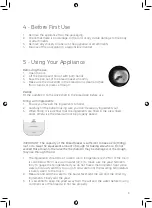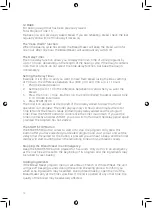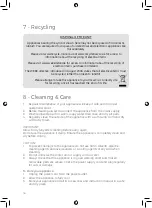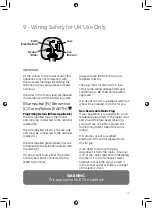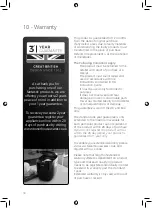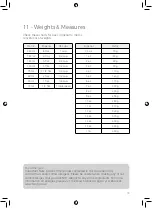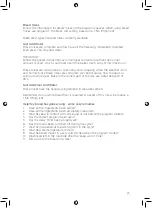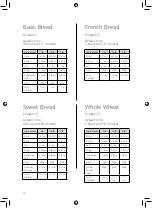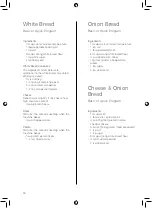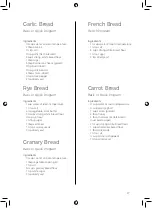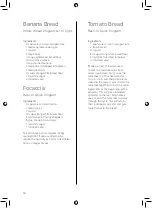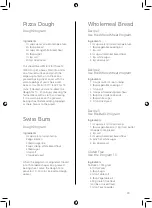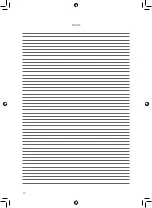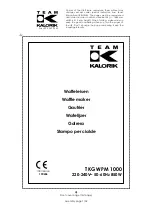
15
6 - Troubleshooting
Symptom
Likely Cause
Remedy
The bread is rising
too much.
Too much yeast or flour.
Not enough salt.
Check the ingredients carefully. If
the ingredients are old or out of
date reduce the water content.
The bread is not
rising enough.
Too little yeast or wrong yeast.
Damp or out of date yeast.
Yeast in contact with salt.
Water too warm.
Wrong type of flour.
Damp, out of date flour.
Check the condition of the
yeast carefully. Only use sachet
yeast and keep the ingredients
separated. Use fresh water at
room temperature.. Use fresh
bread flour. Keep flour dry and in
a dark, cool place.
The bread has
collapsed.
The ingredients are too warm.
Use water at room temperature
and fresh, correctly stored
ingredients.
The bread rose well
but flattened during
baking.
Too much water or the
ingredients are not fresh.
Poor quality flour.
Reduce the water slightly. Do not
exceed the “use by” dates. Use
fresh flour for making your bread.
The bread deformed
after baking.
The gluten content of the flour
is too low. Too much water.
Use fresh flour for proper bread.
Reduce the amount of water
slightly.
The texture is lumpy
or uneven.
The flour to water ratio is
incorrect.
The flour is damp or out of
date.
Check the quantity and quality of
all the ingredients.
Mushroom-like
rough surface.
Too much flour, especially with
white bread.
Excessive salt or sugar.
Check the quantity and quality of
all the ingredients.
The bread is difficult
to slice
The bread is too warm.
Let the bread cool on an open
rack.
The Bread Maker
beeps and displays
E:00 or E:01
The internal temperature in the
unit is too low or too high.
Unplug the unit, remove the pan,
leave the lid open and wait until
the Bread Maker has cooled down.
The display shows
H:HH or E:EE after
you have pressed
START.
The temperature sensor is
inoperative.
Have the Bread Maker examined
by a qualified technician or
contact our Customer Support
Team.
Summary of Contents for T11003
Page 30: ...30 Notes ...
Page 31: ...31 Notes ...




